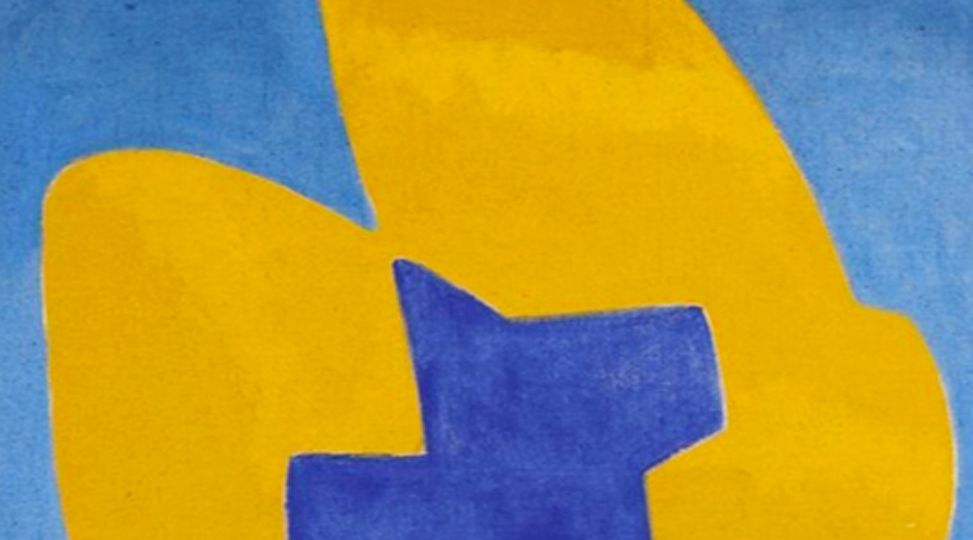
Evolution of Jungian Typology
Historical Insights from Inside the Story
An interview with John Beebe, MD, conducted for PTD by Adam Frey
Download or listen to this article
John Beebe, December 28, 2021
Adam Frey: I want to ask you some big-picture questions about how the eight-function model fits into the history of the study of psychological type. I’ll start by asking about what Jung asserts in the foreword to the 1935 Argentinian edition of Psychological Types, where he says that the purpose of the type theory is to “sort out and organize the welter of empirical material” of psychic processes. What do we know about how he actually did that in his work with patients?
John Beebe: Well, first of all, I’m a working psychotherapist, and I assume that I’m doing something very similar to what Jung did. In fact, I do it not only similarly in content but also in process, because he was also talking to his patients—unlike the way the Freudian model eventually codified, where the analyst said much less and the patient said mostly everything.
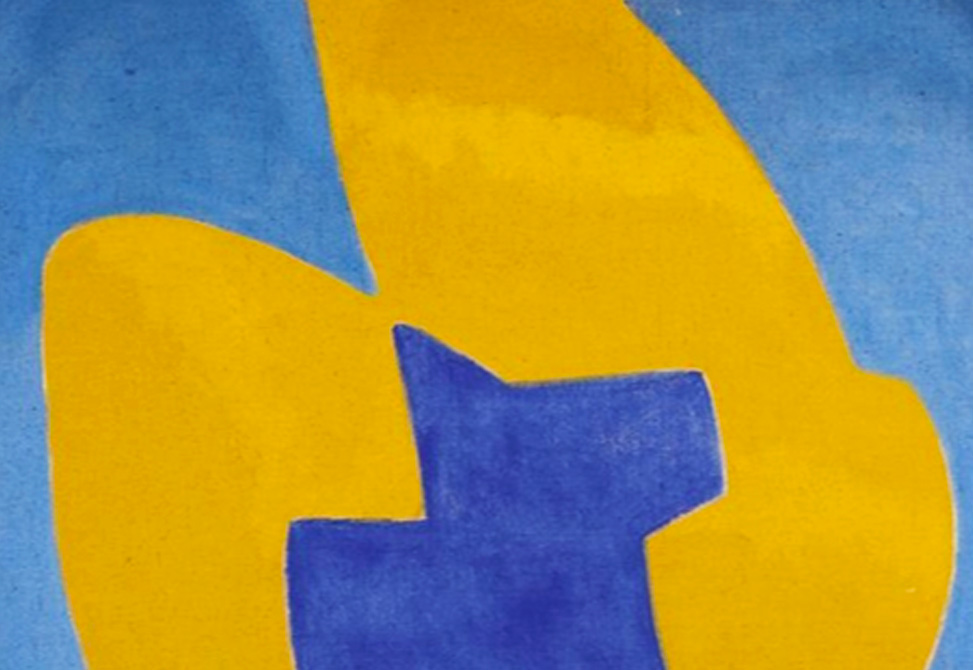
It’s a conversation that’s animated by two people doing their best to communicate with each other in what could be ultimately a useful way but finding out, like any other conversation, that it’s complicated by all kinds of presuppositions, prejudices, and projections. Jung himself, as he started getting into truly psychological work as a psychiatrist, let’s say from 1902 to 1915, when he was meeting everybody who was anybody in collective psychotherapy, or reading their work, said that in that entire time, there were only two people he had a conversation with that he could call an “uncomplicated conversation,” that is, a conversation not made much more difficult by the presence of complexes on both sides that were affecting the interaction so much that it couldn’t proceed naturally. One of those two people was William James, whom he met in America twice. The first time, William James said Jung made a very pleasing impression on him. The second time, recognizing Jung’s intensity, he didn’t seem quite as taken with him, finding Jung insistent. For Jung, though, William James was lucid and direct. The other person in that category for him was a Geneva psychologist named Théodore Flournoy, who had written an amazing book called From India to the Planet Mars (1899/1994) about archetypal material that appears when someone is in a dissociative state of consciousness. It’s a classic about altered states of consciousness, and apparently Jung had no trouble talking to him about his own understanding of such states, which he had begun to call “complexes.” The man that is writing the preface to the Argentine edition of Psychological Types that came out in 1935 is a man who has already gone through the break with Sigmund Freud. He’s gone through a series of encounters with other people who both do and don’t understand the difference of emphasis in his own work, and by now he’s used also to working with seriously neurotic or borderline or occasionally psychotic people in outpatient psychotherapy who are presenting their complexes for analysis. So, he was coming out of a series of complicated conversations with people who are struggling with their relation to the unconscious, while he was struggling with his relation to the unconscious and was also trying to create a theory of the unconscious, which kept opening and unfolding. In that rather mad series of healing encounters, Jung had had literally hundreds of “complicated” conversations. Complicated conversations occur when different types of consciousness come up and meet other kinds of consciousness, which both befriend and oppose them. And so there you need some way of making sense of “what are the regular territories within this mad conversation?” And that gets into, finally, the creation that he achieved by the time he had published Psychological Types in 1921: of a flexible-enough model to cover all the collisions of consciousness that can arise. It’s almost like in advance of the physics of his own time, he had discovered a series of elementary particles of consciousness and was also the accelerator at CERN in Switzerland that was able to watch their collisions and decide when it was time to add another particle to explain what the findings were in the cyclotron that he called Jungian analysis.
For Jung, typology was always about a type of consciousness meeting another type of consciousness, and perhaps from within being challenged by yet another consciousness. It was in this endless maze of competing consciousnesses that Jung had concluded which elements make up how we relate to each other and how we assert ourselves and show other people our differences in the hope that they will eventually understand them. If you can follow that image, you understand Jung’s perspective at the time he wrote Psychological Types.
Adam Frey: You’ve known some people who were analyzed by Jung. Did they say that he spoke in the analytic sessions about their material—sorting it out according to psychological type with them in the analytic process?
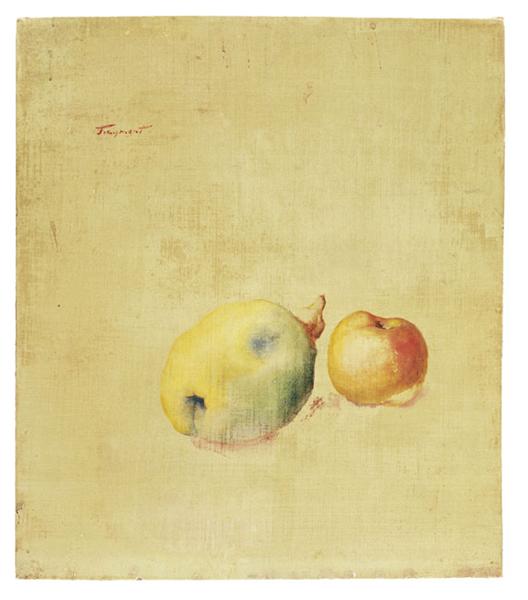
Adam Frey: That’s three years before Psychological Types was published.
John Beebe: Exactly. By that time, he’d at least figured out all four functions of consciousness. He writes to her—and remember, this is a woman he first saw as a regressed, psychotic person at the Burghölzli, who thanks to his treatment and her own enormous energies for recovery, was able to go to medical school, graduate, and was now a doctor. “Dear Doctor,” he says,
You have grasped the elements of type theory except for the problem of feeling. You define feelings one-sidedly and arbitrarily as something conscious. If there are unconscious thoughts, there are also unconscious feelings, so to speak. The feelings of the introvert are infantile, archaic, symbolic, because they are mainly of an unconscious nature. The extravert’s own thoughts are similar. You are an intuitive extravert type. Your conception of the unconscious seems arbitrary to me. It is not clear how you can practically distinguish between a side-conscious, a pre-conscious, a subconscious, and an unconscious. Where do dreams come from? Freud recognizes the psychology of the ego in the same way as Adler recognizes sexuality; but that is all. Adler is not to be ranked alongside Freud; otherwise, you do violence to both. With friendly greetings. Yours sincerely, Dr. Jung. (Covington & Wharton, 2003, p. 52)
Look at how much he’s talking type with her, to answer your question. Of course, it also shows the incredible one-sidedness of the view of type that he was still holding onto as late as then because he was still conceiving feeling, when conscious, as inherently extraverted and thinking as naturally introverted.
If he was right that her primary orientation was through extraverted intuition, that may explain why he and Spielrein had such an oppositional relationship. At one point in the treatment, when he was still at the Burghölzli, she stabbed him in his wrist. He was very shocked by it. She had a violent, angry resistance to Jung, as well as a tremendous romantic attraction to him. And possibly he to her as well because he certainly, at the very least, held her hand, and they could talk what she called “poetry” together. How far that “poetry” went, we’ll never know. The common assumption is that they must have had an affair. Some historians who have looked deeply into it say they didn’t have an affair but that he allowed her to believe that they had some kind of romantic connection. She eventually raised this issue, and it became a bit of a scandal in Zürich. It was a huge conflict between them, and Jung was too ashamed to report all of his part in it to Freud. There was obviously what I would now call an opposition between his dominant, as I see it, introverted intuition and her dominant extraverted intuition. Because there’s such an intense opposition between the introverted and the extraverted aspect of a function—in this case the two intuitive functions—people often, when they find that they’re in that kind of opposition, mistakenly try to bridge the opposition by falling in love or sexualizing the relationship in some way. When it happens in therapy, it may bring them to a court of law or to an ethics committee later, where someone quite correctly insists that the doctor should have known better than to allow that way of solving their opposition. What’s not usually recognized is that what was being attempted was to resolve an opposition. We usually see these situations as simply an abuse of power and do not fully grasp the desperation of people trying to connect when they’re essentially different. Obviously, though, breaking boundaries is an extreme as well as unethical way of resolving differences in attitude in the same function, and many therapeutic couples have managed to negotiate these differences with mutual respect.
Unfortunately, Jung’s early models of type were not helpful to understanding this kind of opposition. All he had at first—as long as between 1904 and 1913—was that there were basically two types of people: the extravert, who was going to be consciously feeling oriented, and the introvert, who was more likely to be thinking in orientation. He’s telling Spielrein as late as 1917 that she has misread the feelings of the introvert. “The feelings of the introvert are infantile, archaic, symbolic because they are mainly of an unconscious nature.” Here, I think Jung is talking about his own feelings. “The extravert’s own thoughts are similar.” He’s saying, in effect, “Look, my feelings are infantile, archaic, and symbolic, unconscious because I’m a thinking introvert, and your thoughts are similar, because you are an extravert.” He’s saying, “You have to watch out for the way you think, just like I have to watch out for the way I feel.” That was his way of accepting responsibility for something she stirred up in him that made him behave in an infantile, archaic, or symbolic way. But far short of an apology, he is also warning her that she should not trust her thinking as much as his. Now, that has been interpreted by analysts who’ve studied this as sexist rationalization on Jung’s part—what we would today call “mansplaining.” He’s saying basically that there’s something wrong with his first woman analytic patient’s thinking. I think Jung may have been trying to understand something that happened between them as the fact that each had had their unconscious side stirred. But unfortunately, since his theory at that time was “extravert equals feeling” and “introvert equals thinking,” he was driven to assign only infantile feeling to himself and to characterize the extraverted Spielrein’s thinking about the psychology of introverts as inferior. This certainly comes across as patriarchal and self-serving today.
What we can say now is that they were intuitive types with opposing attitudes as to introversion and extraversion: their intuitions would collide. Even if there was an additional collision that evoked immature introverted aspects of his own feeling, and on her side perhaps immature extraverted aspects of her own thinking, I wouldn’t formulate the problem the way Jung explained it to Spielrien in 1917. Analyzing the two of them from the standpoint of an eight-function model, we can imagine that perhaps there was Jung, an introverted intuitive with extraverted thinking, and here is Sabina Spielrein with perhaps an extraverted intuitive and auxiliary introverted feeling, and you can then re-write his letter to her in which he conflates extraversion with feeling and introversion with thinking and have Jung say, “Well, if you look at our inner children, our third functions, you have a tendency to get a little inflated and omnipotent around your extraverted thinking ideas, just as I have a tendency to become stubborn, infantile, regressed, symbolic and archaic when I use my introverted feeling.”
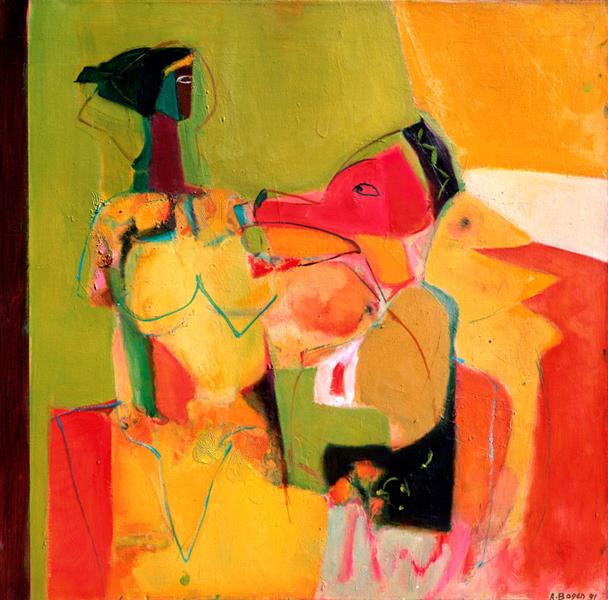
Adam Frey: It’s a fascinating example and interesting that it comes, in time, even before the publication of the book. More than that, the fact that this was the example that came to your mind suggests to me that if Jung used the type model to sort out the “welter of material,” as he suggests, he mostly kept how he did that to himself.
John Beebe: Right, and perhaps should have, because his model wasn’t evolved enough to do it well. People who try to use Jung’s typology too quickly either focus on extravert–introvert and make that the basis of everything, or they seize on one or two functions, like thinking and feeling, or intuition and sensation. Unless you use it all, you’re likely to miss something important. It’s not just a complex model; it’s a model of something that’s inherently complex, what today we would call complexity. It must embrace a series of complexes, all associated with each other in the complexity we call the personal self, that is revealed in therapy to the personal self of a therapist, whose own complexity engages with the complexity of the other. Unless you have a model that can survey that complexity, you never get to what’s going on. Moreover, he hadn’t even used the word “archetype” until 1919. It was an old word that he appropriated. He did have an idea, “primordial images,” and he had words like “archaic,” “infantile,” and “symbolic,” but he hadn’t added in a sense of the archetypes involved. It’s very different when you can see Spielrein and Jung playing together like children in the secret garden of the newborn field of psychoanalysis than when you try to see him as a supposedly mature, responsible Doctor C.G. Jung and she as the supposedly completely immature and vulnerable Sabina Spielrein. Actually, they were both very powerful, complicated, bright people with a lot of psychological creativity, glad they had found each other and sad that they had to part ways. For me, the eight-function model opens life up the way a novelist does. We can assume neither that people are composed of egos that know what they’re doing nor that they have little consciousness when so much of human consciousness is operating spontaneously and out of our control in complex interactions.
Adam Frey: I have more questions about Jung’s relation to the types. But for a minute, I want to go forward in time and ask: among the more-or-less first generation of analysts that you knew, or the analysts that were older than you as you were in training, did they use the type theory in the way that Jung envisioned: sorting out the jumble of psychological materials according to the types?
John Beebe: No, unfortunately they ended up with rather rigid formulations, even of themselves. For example, one of the first analysts, who was my friend Tom Kirsch, was very sensitive and smart and loved Psychological Types. It was his favorite of the Jungian books. He was the one who told me, back in 1966, that I was an intuitive type. It was so helpful to me to know that when I was beginning to read Jung. I met Tom when I was an intern in San Francisco, and he was doing his alternative military service in the Public Health Service as a psychiatric consultant. He was three years older than me. Sometimes he would say things like, “Well, I think …” and then he’d pause and say, “Well, I can’t think, because I’m a feeling type.” Today I’d say, as Tom himself eventually came to do, that he was an extraverted intuitive type with introverted feeling—an ENFP. But he had for a long time been pigeonholed in his analysis as an introverted feeling type, which made it harder for him to realize his thinking. Certainly, Tom had a great deal of introverted feeling, but it was his auxiliary function. When I first encountered other Jungians, I often met people who walked around hearing that they were either introverts or extraverts, and because introverts, that they were this or that way in the way they used the functions of consciousness. They most often believed that they were either feeling or thinking. Tom was smart enough to see through that eventually, and he knew types very well, but there was in him that early thinking, and it was some time before he finally was able to say to the world that he was actually an extraverted intuitive with more options for both feeling and thinking than he’d initially been allowed. One of the reasons I got so interested in constructing a type model for myself is that I truly appreciated Tom’s telling me that I was an intuitive type. I wanted to sort out what that meant, starting with what kind of intuition it was, and that gave me room to locate my thinking and my feeling as well. Later, my model helped me to befriend what he was like in a community that had defined intuition too narrowly, as introverted intuition. The growth of the field of Jungian analysis itself owes a great deal to Tom Kirsch, precisely because he was extraverted intuitive and didn’t treat psychology as something that could only be done by introverts in an introverted way and, therefore, wouldn’t be possible to bring to the world at large because that would require some extraverted sense of its possibilities in training programs all over the world. Tom had a lot to do with what were called the “developing groups” of the International Association for Analytical Psychology that became the basis of institutes and training programs in parts of the world that had previously been more or less written off, but where there was actually considerable interest in Jungian psychology. Both of Tom’s parents were Jungian analysts, and he had various Jungian analyst supervisors and teachers—but with nearly all of them came encouragement to think more of his introverted side, and he had to find his own way to realize his extraverted side because it was somehow not defined as something an intuitive could have. There again we see the need for eight functions of consciousness.
By the time Marie-Louise von Franz published her part of the Lectures on Jung’s Typology in 1971, she was showing students in Zürich the very same thing: that to make sense of Jung, you need to consider all eight function-attitudes. She took the eight dominant function-types seriously. That book opened the door for people like me to capitalize on. That’s, however, five years after I first had that conversation about my own type with Tom, and our friendship had begun, and I was a participant in even this very extraverted intuitive man’s struggle to make his own extraverted point of view heard, seen, and valued. After Tom died in 2017, Andrew Samuels said that Jungian analysis today would be impossible to conceive without what Tom had opened up. He had more to do with the actual identity of the Jungian analyst in the world than anyone else. Now that’s a big statement, but it’s a statement that compensates tremendously and shows how far our field has come since those early days when we thought so narrowly and rigidly, and therapists latched on to either the introversion or the extraversion of the client, which might have been expressed in their auxiliary function or their dominant function, and thought that was the whole thing, conceiving the person mostly in that one way. That’s not watching the welter of empirical material; that’s selectively interpreting people.
Adam Frey: I’m going to go back for a minute to Jung. In a lecture in 1923 on types, Jung described the undeveloped functions of the psyche as all being opposite in attitude to the superior function—all of them (1923/1971, ¶ 908). What did he do with that concept that the undeveloped part was opposite in attitude?
John Beebe: Well, there are two ways to look at that. Jung talked about the inferior function as carrying the entire relation to the unconscious. And unfortunately, that meant for some people not quite what you just finished saying, but rather that if your dominant function was extraverted, so too would your auxiliary function be extraverted, and even your third function be extraverted. Your only introverted function was the inferior function, and yet at the same time, they would use this confusing term about all the “undeveloped parts” of yourself. And so smuggled into there are what are hardly named as such, but all the “shadow functions,” as I call them today, which are the other functions with the other attitudes. What they probably meant was, taking a person like me, that if they knew I was extraverted, and they were willing to agree with Tom that I was an extraverted intuitive, then poor John Beebe would have extraverted intuition, and, yes, he has thinking, but it has to be extraverted thinking, and he does have extraverted feeling, we can see that occasionally—that’s a sweet, childlike, idealistic part of him. But poor John is so clueless about introversion; no wonder he’s depressed and needs analysis. And that’s his introverted sensation, and we’ll let him discover that for himself. I, of course, did, but by then, you see, my introverted sensation was supposed to have given me also my introverted feeling and my introverted thinking and my introverted intuition. Of course, it didn’t, and couldn’t. That’s where my interest in undeveloped functions began. But they came up in me in far other ways than through the inferior function, even though the function helped me to sort them out. Anybody who’d listened and watched me would have noticed that I rarely use extraverted thinking; I use introverted thinking: that was my auxiliary function. But the type theory Jungians had then wouldn’t allow them to see this and name it. It was Isabel Briggs Myers, who was not an analyst, who was the first person to point this out: that one’s auxiliary function is, as Jung says in one place, “in every respect different from the nature of the primary function” (1921/1971, ¶ 669). All Jung meant by “in every respect different” was that the auxiliary function was different in one respect, which was a big one: if our dominant function is what he called a “rational” function, our auxiliary will be an “irrational” function, and vice versa. It was only because our irrational functions are so different from rational functions, he added in that “in every respect.” Fortunately, Isabel Briggs Myers and her mother, Katharine Briggs, took him at his word and did what the great literary critic Harold Bloom calls a “creative misreading” (1997, p. xlv) of a badly written sentence, getting it to mean what it should have meant—that the auxiliary is different in every respect from the dominant. Meaning not only that if the first function is extraverted, the second will be introverted, but if the first function is rational (thinking or feeling), the second function will be irrational (sensation or intuition). That’s how you can figure out that a John Beebe who has dominant extraverted intuition—an irrational extraverted function—will have an auxiliary rational function that is introverted, hence introverted thinking, since John is no way a feeling type. Suddenly, I make sense, and you don’t have to turn to my inferior function to find all of my introversion, which is almost as evident when I lecture as my dominant disorganized intuition.
Adam Frey: It seems like you’re implying that Isabel Myers and her mother rather innocently took Jung at his word that the auxiliary was different in every respect from the superior function and proceeded from there. But I’ve always thought that they had observed that the auxiliary was of the opposite attitude from the superior function, and they fastened on that sentence as a way to lend authority to what they had already observed.
John Beebe: We’ll never know, will we? Since you have good introverted sensation, Adam, you probably have the ability to tell what’s real from what’s not real, so I bow to you in finding my version a little idealistic. You found your image of Isabel and Katharine a little more from the way you have already observed people are. I agree that they were looking closely at how people operated and thus must have noticed that extraversion and introversion are available to all of us. Maybe it also helped that they were American and pragmatic. Anybody who’s been around Americans any length of time can easily see the extraverted and introverted in oscillation in just about everyone.
Adam Frey: In Gifts Differing (1980, p. 19), Isabel Briggs Myers openly finds fault with Jung for not showing more interest in the potential of the auxiliary to bring balance to the psyche in that way. I’ve wondered why Jung didn’t observe it. You’re saying his theory got in his way.
John Beebe: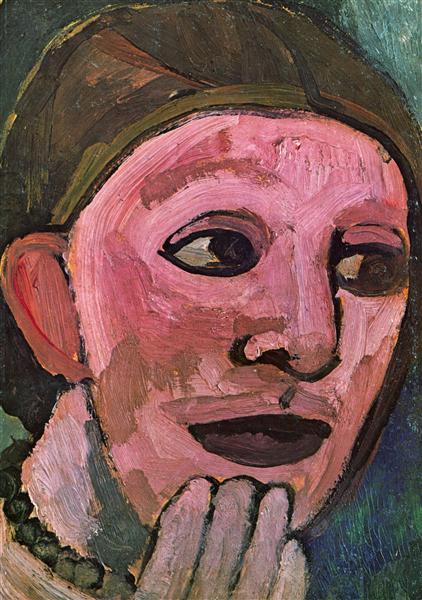
When we ask why it was so hard for Jung to realize that the auxiliary function was opposite in attitude as to be a caretaker for others rather than another way of asserting oneself, we should remember that Jung was not an especially good father. When I did the preface to the book I put together selections from Jung’s writings, Aspects of the Masculine (1989), my analyst colleague Arthur Colman, who’d written two books about the archetype of the father, asked why I didn’t comment on the father in Jung’s psychology. Yet it’s amazing how rarely the father comes up in Jung’s writings. As you know, because you were with me, I’ve talked to Jung’s son, Franz, who said that his father was busy most of the time when he was growing up. He could be wonderful in some family situations, such as vacations, but mostly when people needed advice in that family, it was to their mother, Emma, that they turned. And if Franz needed especially good advice, he would go to Emma’s mother because she was an extraverted intuitive who could also see the way through to mastering a difficulty. Jung himself was not that kind of father.
As a world teacher, though, Jung distinguished himself in many lectures that he gave—particularly in his English seminars. You can get a taste of this in the five wonderful lectures he wrote in 1935 and delivered at the Tavistock Clinic in London. There you can experience Jung explaining his theories with extraverted thinking. There you can feel that this man could father thinking in the analytic field in a wonderful way. But at a personal level, I think he was kind of a dud as a father. His own father was the weaker member of the household and died young. Jung became a father in a world intellectual—a “world doctor”—sense, but he did not fully know what to do with the extraverted problems of his own family, and in that way, perhaps he didn’t realize there, at a personal level, the caretaking potential of his own extraverted thinking. As a collective figure, however, he puts out this amazing body of work, and that is the way he “fathers” the world.
Adam Frey: I wonder if there could be another cultural aspect to this. Could it be that in contemporary culture there’s a different relation to caretaking and its role in our life than there was in 1921?
John Beebe: That’s a very interesting question. In a way, it’s only in my own time that we have been given permission to take care of each other. I wonder if it would have been seen as intrusive in Jung’s time to try too hard to take care of each other. Jung’s mother seems to have been somewhat psychotic. She had a very serious depression that required hospitalization when Jung was quite small. A major depression then meant having to spend a long time in a sanitarium. We don’t know exactly what her condition was, but I wonder if Paul Achilles Jung, Jung’s father, would have felt entitled to take care of his wife. It wasn’t the sort of thing adults did for each other then, whereas in America today, when there’s someone who’s psychologically challenged, there are not only anti-depressants, there is often someone in the family who is willing to function as a caretaker, to visit and offer support. So, I do think there’s a cultural shift in terms of what we feel permitted to do as adults for each other.
Adam Frey: Not only permitted but expected. We’re taught today, in the contemporary culture, that if we’re somewhere and we hear someone saying something that’s racist or sexist, we should intervene. If something happens to someone in your family—let’s say there’s a mental illness—you’re asked, “What did you do about it?” I’m not a cultural historian, but I’m guessing that maybe part of the reason that Jung and the early generation of Jungian analysts were so incurious about the auxiliary function, and rather unobservant about its nature with respect to introversion and extraversion, is maybe it just wasn’t as enabled as it is today.
John Beebe: Yes. There has been an enabling of the entire caretaking/being-taken-care-of relationship that could be called “parent to child”—father or mother function to puer or puella function in another person. My own third function of extraverted feeling has long known it needs caretaking from others and found a way to get it. Even today, people are wonderful at taking care of me. Sometimes when I lecture, I show my child, and the audience takes care of my child as I lecture, and it’s kind of an impressive interchange where I’m not only just teaching them, which can feel one-sided, but they’re also holding me in my insecurity and making me feel like going on teaching. They subtly signal me that I am getting through to them, and they are willing for it to continue. I like the balance of that.
In Freud’s time and Jung’s, parent–child relationships were relegated to the unconscious. In Freud, they became the Oedipus Complex and in Jung the Mother Complex and the Father Complex.
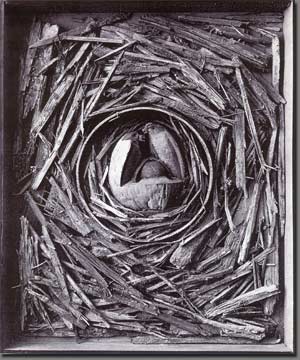
Adam Frey: You’ve referred to the third function as associated with the inner child or adolescent. Wasn’t it around 1980 that there got to be a great interest in the MBTI® community about whether the third function’s attitude was opposite or the same to the auxiliary function? What brought that on?
John Beebe: Harold Grant and I both published about the attitude of the third function in the same year—1983. His book was From Image to Likeness. I had been saying that the functions alternate for some time then. My friend, the American fiction writer Nancy Hale who was a generation older than me, had been in analysis with Beatrice Hinkle, the first Jungian analyst in America. Nancy first got to know me when I was between the ages of 18 and 21, and later, when I was trying to figure out if I was an extravert or an introvert, she said, “Oh well, you’re a subjective extravert with lots of introspection.” That was her version of Beatrice Hinkle’s type language (1949). When I eventually explained to Nancy that I had figured out that the functions of consciousness, organized in descending order of preference, alternated between extraverted and introverted, she immediately said, “Oh, it’s like a system of checks and balances,” making an analogy to the U.S. Constitution. This conversation took place around 1974.
Adam Frey: If someone had come up with the eight-function, eight-archetype model in the 1950s, do you think psychologically minded people could have understood it? Would it have caught on?
John Beebe: People would have seen it as projecting Oedipal dynamics onto psychological theory. The way psychoanalysis took over American thought is still a story to be told. The psychoanalytic view was that there was already imbedded in us—almost like the Egyptian pantheon which lasted for two thousand years in that culture—a series of statues that we had to deal with. And they would be Mother and Father and Baby. These three together in a complexity, a triangle of complexes, became, for psychoanalysts, the first archetype. It attracted Jung that Freud talked about Oedipus—it hit his imagination. But he got disappointed when he discovered that that archetype was going to be the only one. (After Jung had withdrawn in frustration with the narrowness of the thinking of his first analytic “father,” Freud added another archetypal name, Narcissus, to the psychoanalytic lexicon.)
In 1939, a psychoanalyst named Heinz Hartmann wrote a book called Ego Psychology and the Problem of Adaptation. His ideas became a basis of what would be known as “ego psychology” in psychoanalysis. Ego psychology was the dominant school of psychoanalysis when I was coming up and getting my training as a medical doctor. Hartmann postulated that people’s struggles with authority, sexuality, and the world all took place against a background of what he called “the average expectable environment.” That made it permissible for 1950s psychoanalysts to assume that everybody’s family was like “Ozzie and Harriet,” on the television program of that name. That was the average expectable environment. The trouble is that I’ve never seen that average expectable environment. I didn’t grow up in that kind of family, and I haven’t seen anyone else who did either. That average expectable environment is a convenient fantasy, but real lives are lived in a very different way. For my generation, we’ve had to have a psychology that doesn’t assume that everyone’s experience is the same. Rather, we need to find out empirically from the welter of our own experience, including self-experience, how consciousness sorts out. We have to take up the different cultural roles and define and redefine them for ourselves until we get a life that works—that is, makes sense of our own complexity. The eight-function, eight-archetype model is much more suited to psychology in this time than it would have been in the mid-twentieth century because now we can’t assume our environment will stay the same, and we need more than two options for coping with it.
Adam Frey: We’ve been mostly talking about the egosyntonic part of the psyche in the questions that I’ve asked. But I want to get to the deeper unconscious, to the “shadow” part of your model. I was born in the 1950s as you know, and I remember when the unconscious was widely considered to be a realm of dread, a location for awful, frightening, shameful stuff that’s better left undisturbed. It seems like it was impossible for people of my parents’ generation to speak of the unconscious without grimacing. I just wonder what changes you have noticed in the culture over your lifetime about attitudes toward the unconscious because that’s certainly not the contemporary Jungian attitude toward the unconscious.
John Beebe: I have a paper called “Attitudes Toward the Unconscious” (1997) that I published in the Journal of Analytical Psychology that a lot of people have seemed to find. The word “attitude” is critical in Jungian psychology—not just attitudes like extraversion, introversion, but something harder to define, such as the attitude, whether positive or negative, that one brings to the conscious and the unconscious itself. It’s striking what a positive attitude Jung has toward the unconscious—how willing he is to give it the status of a source of wisdom and, as I call it in the subtitle to my book Energies and Patterns in Psychological Type (2017), a “reservoir of consciousness,” so that the consciousness that we have on an everyday basis is only part of a larger reserve that we can draw on.
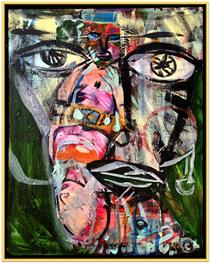
That was no longer his opinion in 1947 when a young American named George Hogle visited him. George grew up in a Mormon family in Utah and then became a Quaker and committed himself to nonviolence. He took analytic training in London and eventually became an analyst member of the C. G. Jung Institute of San Francisco. In 1947, he was very much interested in world peace and was on his way to visit Russia but stopped in Zürich and met Jung. Jung was listening to this young, idealistic Quaker who wanted to help bring peace and understanding between America and Russa. Jung’s eyes narrowed, and he said to George, “And what do you think God is?” George, a very sweet man, answered, “Well, God is love.” And Jung looked at him and said, “Don’t you think God can also be hate?” That shows the willingness Jung had by that time to see the unconscious, which for him was where God was, as not just benign. It took a long time for him to get to that point, and it’s akin to what Melanie Klein was articulating at that same time that essential ambivalence is necessary for us, but also necessary for us to resolve so that we don’t just become cynical. For Mrs. Klein, good is always shadowed by evil, and therefore there’s no progress. That was not Jung’s point of view. He felt that we could progress, but we had to progress with the knowledge of how destructive we can be.
When I talk about the “shadow functions,” their archetypes, and the difficulties they present, I try to mention also, as with other complexes, the opportunities they offer. We need our shadow to survive. The shadow functions are what my colleague Donald Kalsched (1996) calls “self-care systems.” And it takes a certain amount of evil in yourself to be able to handle the evil that’s in the world. If you’re the kind of person who often is put in double binds by other people because you’re too naive and too sweet and too eager to please them, and then they give you contradictory expectations and put you in a box, you must learn to use your own trickster archetype to turn those double binds around. So, the integration of the shadow is very important. At the same time, whenever you integrate a bit of the shadow, you also have to shiver because you may be becoming meaner, more ruthless, more selfish, and more destructive than you need to be to survive. The question is: “How much?” Jung understood that we need to take a bit of evil into our own consciousness in order to survive, but we have to dilute it as much as possible. In that, he sounds very much like Mani, the founder of Manichaeism. Jung once denied that he was Neo-Manichaean. But in a letter that he wrote in 1929 to a young writer named Walter Robert Corti, he said there were four fundamental pillars of the human spirit: the Buddha, Lao Tzu, Jesus, and Mani. Mani, who was later declared a heretic, created his own brand of Christian church, which spread from Persia to China. He was martyred by the emperor of the Persians in the early centuries of the Christian era, but his influence lasted. Jung named Mani as essential to the understanding of the spirit of our complexes because Mani taught that evil was even beyond God’s capacity to control—that evil had an autonomy and that it was up to human beings to learn enough about evil, take some of it into their system and dilute it so that we could do what God Him- or Herself, is incapable of doing: to take on our evil and try to transform it. That Jung agreed with that view is quite extraordinary, and it will never make him popular because it’s so much easier to take a moralistic attitude toward evil and say, “I’m not going to touch that. I’m not going to have anything to do with it. I’ll be aware of it, but I am certainly not going to take it into myself and enact it in any way.” Jung’s position is more complex: he says both that we need the shadow and must be on guard about it, because the shadow we can’t live without remains none too good. There may be something it can do for us, but there’s a lot it can do to hurt us. It’s not an easy process to accept and discriminate it. In the end, though, you become a more real person if you take up the effort, and perhaps someone more capable of knowing when you’re up to no good than you would if you didn’t try that experiment in integration. It has its dark as well as light aspect in each of us. I don’t know another depth psychology that deals with this aspect of the problem of evil as fully as Jung’s. And it’s embedded in my idea of the types of the shadow.
Adam Frey: So, what is the role of the analyst in helping someone come face to face with their shadow and deal with it?
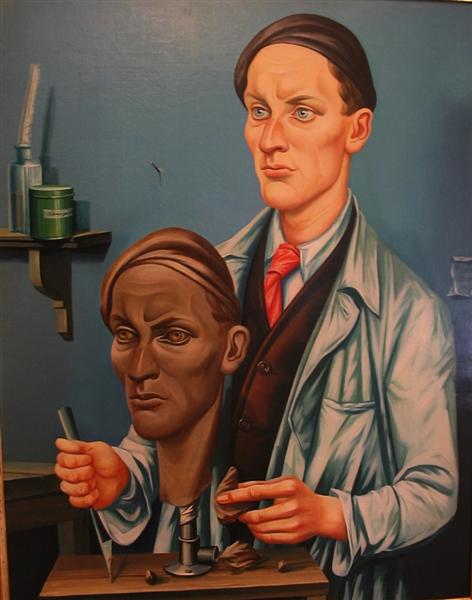
My analyst, Joseph Henderson, surprised me by saying “NO!” He saw that this was exactly what I didn’t need to do—to plan to deploy my introverted feeling in that manipulative way. He probably saved my career as a writer because I don’t think anybody would have wanted to publish me if it got around that I behaved like that! His fatherly extraverted thinking taught me that sometimes we need a wise parent to tell us when we’re too much. Blasting people with negative introverted feeling had never worked for my mother, who had lost friends through her expressions of outrage, and it certainly wouldn’t have worked for me in this situation. But boy did it feel like the thing to do at the time. That was a lesson for me. So, thank God Joe screamed ‘NO!’ at me.
Adam Frey: That might be a good place for us to stop.
John Beebe: Thank you, Adam, for being a wonderful questioner.
References
Beebe, J. (1997). Attitudes toward the unconscious. Journal of Analytical Psychology, 42(1).
Beebe, J. (2017). Energies and patterns in psychological type: The reservoir of consciousness. Routledge.
Beebe, J. & Rosenbaum, C. P. (1975). Psychiatric treatment: Crisis, clinic and consultation. McGraw Hill.
Bloom, H. (1997). The anxiety of influence: A theory of poetry, 2nd ed. Oxford University Press.
Covington, C. & Wharton, B. (Eds.) (2003). Sabina Spielrein: Forgotten pioneer of psychoanalysis. Brunner-Routledge.
Flournoy, T. (1899/1994). From India to the planet Mars: A case of multiple personality with imaginary languages (D. B. Vermilye, Trans.) (S. Shamdasani, Ed.). Princeton: Princeton University Press.
Hartmann, H. (1958). Ego psychology and the problem of adaptation. International Universities Press. (Original work published 1939)
Hinkle, B. (1949). The re-creating of the individual: A study of psychological types and their relation to psychoanalysis. Dodd Mead.
Jung, C. G. (1921/1971). Psychological types (R. F. C. Hull, Trans.). In H. Read et al. (Eds.), The collected works of C. G. Jung (Vol. 6). Princeton University Press.
Jung, C.G. (1929/1973). Letter to Walter Robert Corti, April 30, 1929. In G. Adler & A.
(Eds.), Letters (Vol.1, pp. 64-66). Princeton University Press.
Jung, C.G. (1935/2014). Analytical psychology: Its theory and practice (The Tavistock Lectures). Routledge.
Jung, C. G. (1989). Aspects of the masculine (J. Beebe, Ed). Princeton University Press.
Kalsched, D. (1996). The inner world of trauma: Archetypal defenses of the personal spirit. Routledge.
Myers, I. B. & Myers, P. (1980). Gifts differing. Consulting Psychologists Press.
von Franz, M.-L. & Hillman, J. (1971/1998). Lectures on Jung’s typology. Spring Publications.
Images
Bissier, J. (1941). Cotogna e mela. Retrieved from wikiart.org
Bissier, J. (n. d.) Selbstbildnis. Retrieved from wikiart.org
Bogen, A. (1991). Dialogue. Retrieved from wikiart.org
Hinnebusch, D. (2017). She’s coming out of his third eye. Retrieved from wikiart.org
Modersohn-Becker, P. (1907). Self portrait. Retrieved from wikiart.org
Poliakoff, S. (1968). Composition abstraite. Retrieved from wikiart.org
Pons, L. (1974). Le jeu du circle. Retrieved from wikiart.org


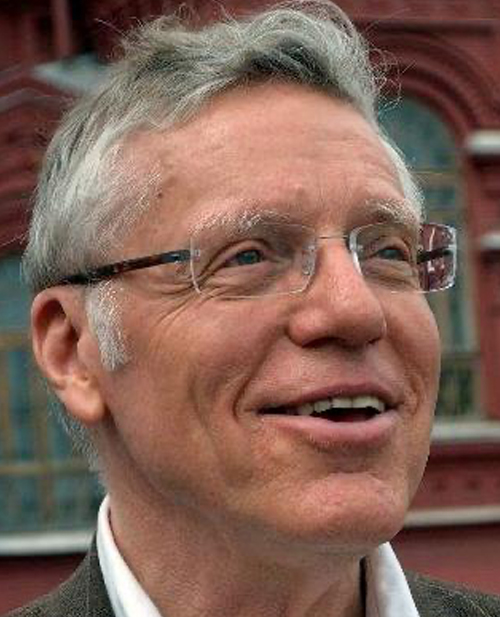


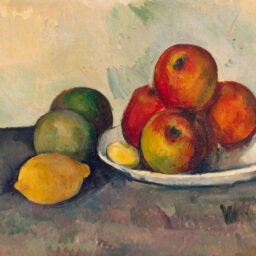
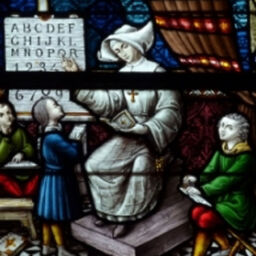
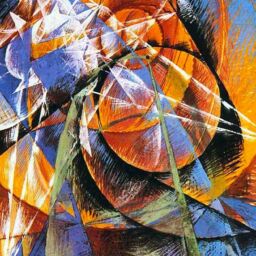
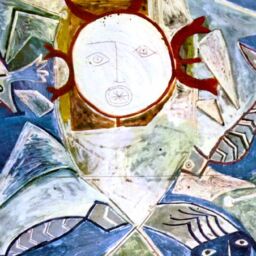
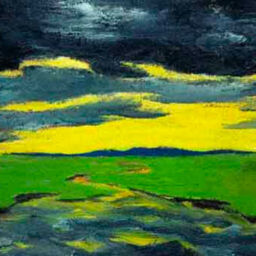
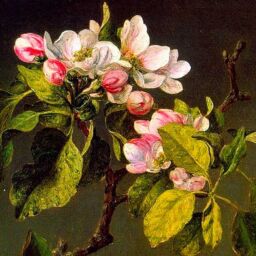
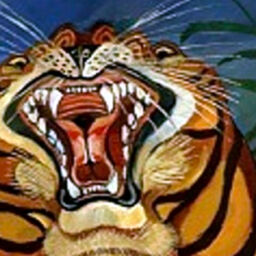
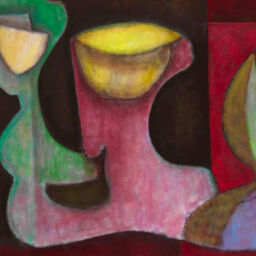
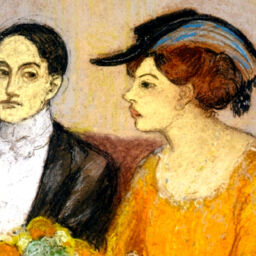
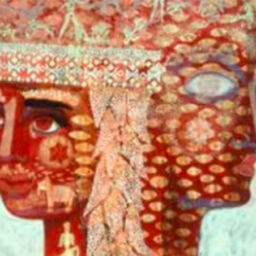
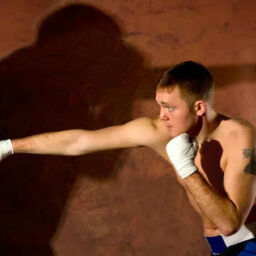
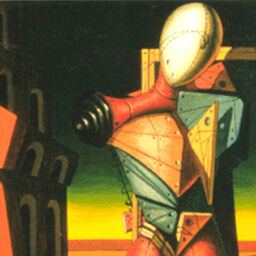

John,
In the spirit of full disclosure, I thought your interview on the Evolution of Jungian Typology might merely be an advertisement for “The Beebe Model.” But it is so much more. Having read and reread Carol’s book about “The Eightfold Way” multiple times in various forms including its proofs, I found myself wanting to know more about the origins, synthesis and subsequent evolution of your model. Adam’s leading questions and your thorough answers, frequently embedded in first-hand historical context, goes a long way in satisfying my craving. Perhaps more importantly, it allows me to remain standing as I surf through the welter of models in the field.
Thanks so much for this masterfully-imparted perspective.
What a helpful and thoughtful conversation. The ongoing refinement of our understanding of types and complexes is one of the major achievements of the post Jung generations, a contribution that may not yet be fully appreciated. Regarding the whole issue of whether “complexes” need continue to labor under the shadow of the Shadow, I share this wonderful excerpt from James Hillman regarding animal imagery and complexes:
“You know, people come to therapy really for blessing. Not so much to fix what’s broken as to get what’s broken blessed. In many cultures, animals do the blessing since they are the divinities. That’s why parts of animals are used in medicines and healing rites. Blessing by the animal still goes on in our civilized lives too. Let’s say you have a quick and clever side to your personality. You sometimes lie, you tend to shoplift, fires excite you, you’re hard to track and hard to trap; you have such a sharp nose that people are shy of doing business with you for fear of being outfoxed. Then you dream of a fox! Now that fox isn’t merely an image of your “Shadow problem,” your propensity to stealth. That fox also gives an archetypal backing to your behavioral traits, placing them more deeply in the nature of things. The fox comes into your dream as a kind of teacher, a doctor animal, who knows lots more than you do about these traits of yours. And that’s a blessing. Instead of a symptom or a character disorder, you now have a fox to live with, and you need to keep an eye on each other.” from Animal Presences (2008), Chapter 13.